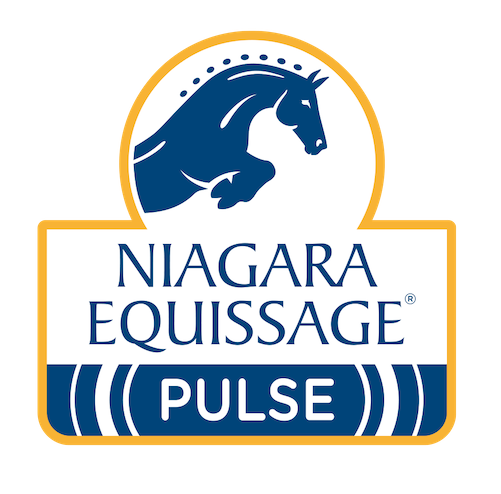Sesamoiditis
Sesamoiditis describes inflammation within the sesamoid bones at the back of the fetlock joint.
The sesamoid bones have a similar action to the navicular bone. They act as ‘pulleys’ for the suspensory ligament as it passes over the back of the fetlock joint.
Sesamoiditis is most common in performance horses where high loading and over flexion of the fetlock joint results in tearing of the sesamoid ligaments and internal bone stress leading to sesamoiditis. Overweight horses and those with long pasterns and low heels also appear to be more prone to development of inflamed sesamoids.
Sesamoiditis results as faulty blood flow is aggravated by concussion, combined with extreme sensory pull, and tearing of ligament attachments, which result in the characteristic pain, swelling and demineralisation of bone.
Can Niagara Equissage help with Sesamoiditis?
Yes.
In general terms, problems associated with the sesamoids are known to be particularly difficult to treat due to the nature of the joint structure, the mechanisms of the surrounding apparatus and how they work together. Vets have varying opinions as to the success of sesamoiditis treatment but for any treatment to have any chance of being successful the horse has to be confined, with the joint being supported so that tension is eased on the fetlock. Often at least 6-8 months convalescence is required before a horse can be returned to full work with the prognosis for each varying greatly, depending on the initial severity of the injury and whether the surrounding ligament are also affected.
The aim of the sesamoiditis treatment is to reduce the inflammation (in the sesamoid bones and fetlock joint) – something that is the primary function Niagara Equissage by virtue of its ability to aid drainage and circulation.
As the horse will be on NSAIDS (non-steroidal anti-inflammatory drugs), then Equissage can readily assist in the more rapid removal of the toxins consequent upon their use.
As in all instances where an injury necessitates box rest, then Niagara Equissage comes into its own at guarding against problems secondary to the initial condition setting in such as stiffness and filled legs. The horse will naturally put more weight onto the opposite front leg so it is quite possible that consequential lower limb swelling will occur due to the additional loading especially as a result of the confinement.
Application
For sesamoiditis treatment, use the Back Pad twice daily on a lower to medium setting (No.2-No.4) for as long as the horse is on stall rest. If the horse is particularly prone to stiffness of the back and hamstrings, then targeted use with the Hand Unit is recommended in these areas (5-10 minutes daily). The Hand Unit can also be used around the injured fetlock joint but care should be taken as sesamoiditis is very painful – use the rubber capped end so as to cushion the vibration. The Leg Boot can readily be used on the opposing foreleg should any signs of swelling become visible. Use on a lower setting to stimulate lymph circulation.

Testimonials
See All- “I had a mare with a slight tear of the suspensory ligament. I had her scanned again after 30 days and was advised to give her another 60 days rest. I got the Niagara Equissage and used the Leg Boot in conjunction with the Back Pad for the next 30 days and had her scanned again, the suspensory was healed to my vet’s amazement.”
- “Our Niagara Equissage helps us keep our horses in top condition and prepare them for competition. The Hand Unit is great for people too.”
- "I like the way the Niagara Equissage relaxes the horses. It helps with sore muscles and the horses recuperation after hard races. I can see a difference."

